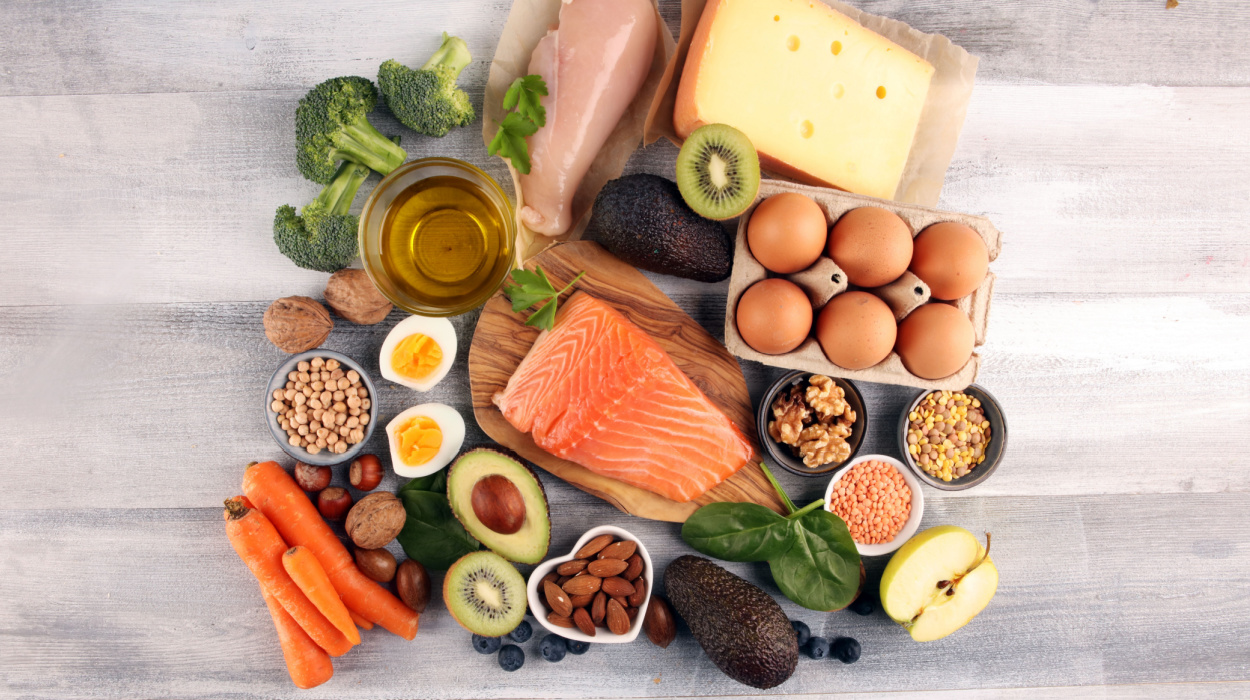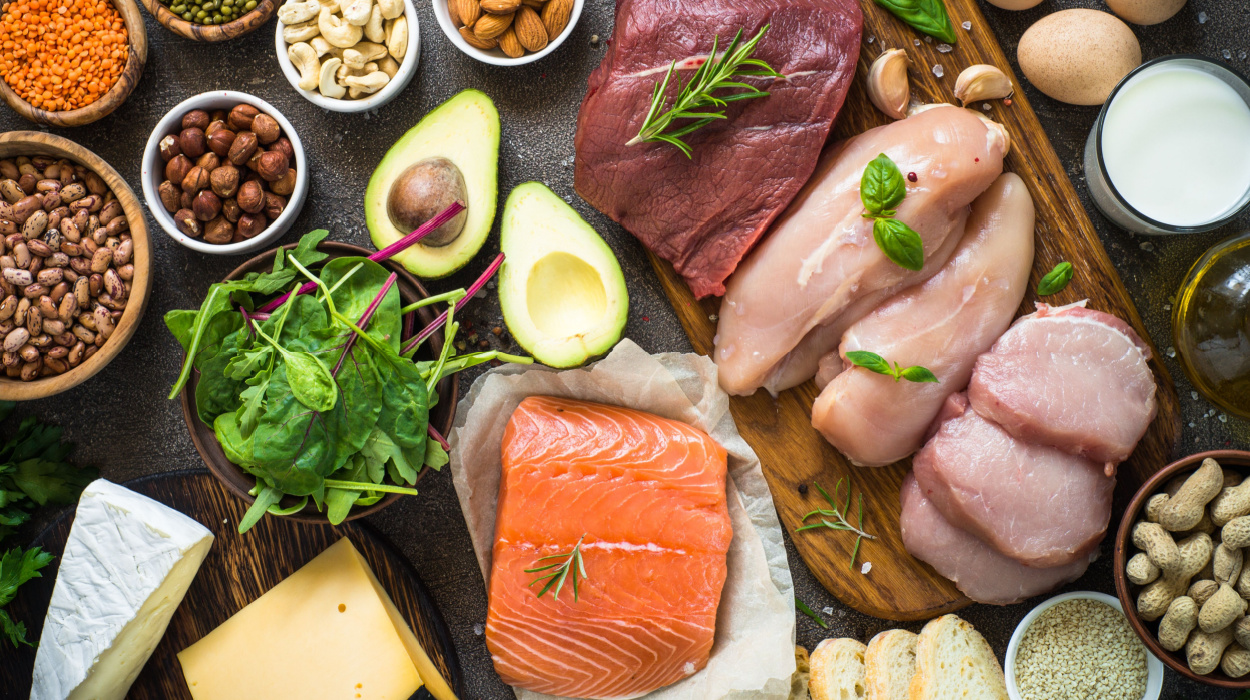 Expert's opinion
Expert's opinion
Expert's opinion
The article is a subjective view on this topic written by writers specializing in medical writing.
It may reflect on a personal journey surrounding struggles with an illness or medical condition, involve product comparisons, diet considerations, or other health-related opinions.
Although the view is entirely that of the writer, it is based on academic experiences and scientific research they have conducted; it is fact-checked by a team of degreed medical experts, and validated by sources attached to the article.
The numbers in parenthesis (1,2,3) will take you to clickable links to related scientific papers.
How To Get Enough Protein While Intermittent Fasting In 2024?

Regardless of which diet you choose, the protein content in your food is important for weight loss. Often, foods that are high in protein will also be full of calories. In intermittent fasting diets, avoiding high-calorie foods on fasting days can make it difficult to meet your daily requirement for lean protein.
With intermittent fasting, the goal is to lose weight but to avoid side effects such as nutrient deficiencies and low energy. Therefore, it is important to balance one’s diet and evaluate every macronutrient, including protein.
Not every source of protein is equal. In addition, not every individual has the same dietary requirements. We can generalize basic requirements and guide for when to seek extra help from a medical professional or nutritionist.
In this article, we will explore the topic of protein consumption during intermittent fasting. Using the latest studies and guidelines we will recommend ways to balance the protein in your diet or your eating habits and understand why it is important.
How Much Protein To Eat When Intermittent Fasting?
Under normal circumstances, the daily recommended protein intake is at least 0.8 grams per kilogram of body weight (0.83 g/kg) per day– about 15% of caloric intake. This is to meet the body’s natural needs for maintaining muscle mass and nutrients.
For an intermittent fasting diet, most studies suggest high-protein intake on non-fasting days of up to 25 to 35% of daily calories and using protein pacing,[1] spreading out protein intake evenly throughout the day.
However, too much protein may not be beneficial for everyone. If you have underlying health conditions such as kidney disease, consult a medical professional because you may need to moderate your protein intake.
How Much Protein Do You Need?
Standard Protein Requirements
Protein is a vital macronutrient[2] that plays a critical role in building and repairing tissues, supporting immune function, and producing hormones and enzymes. Daily intake will vary based on individual factors such as age, sex, activity level, and overall health.
Generally, the estimated average daily minimum requirement for protein is 0.66 g/kg per day. However, the WHO recommends daily protein intake for normal people at 0.83 g/kg per day because the body requires other nutrients that come with protein. This amount provides enough essential amino acids, supports nitrogen balance, and prevents muscle tissue loss. Imagine eating 9-10 ounces of fish or turkey to achieve this minimum.
High-Protein Diet Standards
A high-protein diet is defined as consuming protein for 30% to 50% of your daily calories.
In the fasting state, the body burns fat and breaks down proteins for energy and amino acids.[3] When you prolong the fasting state, more fat and protein are broken down. Therefore, more protein is required for a healthy body while on an intermittent fasting diet.
Special circumstances will require a high-protein diet. Athletes and highly active people need adequate protein to support muscle growth. Individuals with conditions such as cancer or critical illness and wounds would also benefit from high-protein diets.
Working out while fasting is a great way to lower body weight even more, but it has to be carefully planned so you continue to burn fat and not muscle while avoiding energy issues and low tolerance to activity. Timing is important and do your research to stay safe. Get started by reading about Intermittent fasting and working out.
How Long Is Protein Stored In The Body?
The human body continuously undergoes protein turnover, which involves the breakdown and rebuilding of proteins in muscles. This makes it difficult to track where protein comes from in the body.
After eating protein, it is digested in about 5 hours. Approximately half of the digested protein is stored and the other half enters the bloodstream for immediate use. Protein sources vary in how they are digested. For example, whey protein is popular with athletes because it is rapidly digested and absorbed over a couple of hours compared to casein which takes more than four hours to absorb.
To maintain energy levels in the fasting state, the body begins to burn fat 12 to 36 hours after the last bite of food. About 24 hours into the fasting state, it will also burn protein.[4] Therefore, your protein from eating will only need to meet your minimum protein requirements for the following 36 hours.
How To Get Enough Protein While Intermittent Fasting?

You must choose high-quality sources of protein to lose weight and maintain a balanced diet during intermittent fasting. Knowing when to eat and how much helps to maintain energy on fasting days.
Here, we discuss the types of protein sources and recommendations for what high-protein foods to eat and when.
Vegetarian Proteins Vs Animal Proteins
Not all protein sources are the same. The two major groups are animal proteins and vegetable proteins. In addition, you will get unwanted calories or fat from proteins if you are not careful. A grilled chicken breast will have plenty of nutrients and a lot less fat than a steak of the same size if you’re not careful.
The main findings of one recent study[5] on vegetarian athletes reveal that they needed to consume an additional 10 g of protein sources per day to achieve the recommended protein intake of 1.2 g/kg per day compared to a group consuming animal proteins. This study shows the high-quality protein content variation between diets. It is important to be vigilant to count calories along with the nutrient content to meet the requirements of each diet plan.
Here[6] are some of the best high-protein foods:
- Meats such as pork, turkey, or chicken
- Fish
- Eggs and egg whites
- Soy products such as tofu
- Low-fat milk products such as milk, cottage cheese, and Greek yogurt
Optimize Meal Timing
Spreading out your meal times during the whole eating window will help fight hunger and allow for sustained energy. This means having a source of protein with every meal when using a high-protein diet. A high-protein breakfast can be just as important as other meals for daily protein intake.
One study[7] compared high-protein diets eaten three or six times a day to normal eating and found the high-protein diet with six meals per day was the best for weight loss.
Snacks
To further spread out eating during your eating window, you should plan for snacks in your diet plan. Nuts are healthy and easy for a snack. The best protein bars will also help you achieve your macronutrient goals and are easy to use when monitoring your intake.
Essentially, take your list of healthy foods that need little preparation and measure out your servings ahead of time. You can turn almost any high-quality nutrient-rich food into a snack portion with proper planning.
Intermittent Fasting And Protein Supplement

While it is possible to obtain the daily required grams of protein from whole foods, protein supplements are a convenient option to aid in balancing macronutrients with caloric intake. When limiting calories in a diet, you run the risk of nutrient deficiency.
Protein supplements come in various forms. These include protein powder, bars, and protein shakes. They provide a convenient way to boost protein.
When selecting the best low-calorie protein powder supplement for your plan, it is essential to match it to your diet goals, routine, and preferences. Look for options that are low in added sugars and artificial additives.
While protein supplements have many benefits, they should not entirely replace whole-food sources of protein. Whole foods offer a vast array of nutrients that contribute to overall health that are not included in supplements.
Conclusion
Maintaining optimal protein intake is crucial when following an intermittent fasting diet. Protein serves as a building block for our body’s tissues and plays a vital role in numerous physiological processes. It has a moderate impact on your insulin and a slow blood sugar response. By including protein-rich foods, timing meals appropriately, considering protein-rich snacks, and utilizing protein supplements if needed, individuals can ensure they meet their protein requirements while adhering to an intermittent fasting regimen.
As always, it is recommended to consult a healthcare professional or registered dietitian to personalize protein recommendations based on individual needs and goals. With a thoughtful approach, it is possible to strike a balance between intermittent fasting and meeting your protein needs for optimal health and wellness.
+ 7 sources
Health Canal avoids using tertiary references. We have strict sourcing guidelines and rely on peer-reviewed studies, academic researches from medical associations and institutions. To ensure the accuracy of articles in Health Canal, you can read more about the editorial process here
- Arciero, P.J., Poe, M., Mohr, A.E., Ives, S.J., Arciero, A., Sweazea, K.L., Gumpricht, E. and Arciero, K.M. (2022). Intermittent fasting and protein pacing are superior to caloric restriction for weight and visceral fat loss. Obesity, [online] 31(S1), pp.139–149. doi:https://doi.org/10.1002/oby.23660.
- Carbone, J.W. and Pasiakos, S.M. (2019). Dietary Protein and Muscle Mass: Translating Science to Application and Health Benefit. Nutrients, [online] 11(5), pp.1136–1136. doi:https://doi.org/10.3390/nu11051136.
- Dote-Montero, M., Sánchez-Delgado, G. and Éric Ravussin (2022). Effects of Intermittent Fasting on Cardiometabolic Health: An Energy Metabolism Perspective. Nutrients, [online] 14(3), pp.489–489. doi:https://doi.org/10.3390/nu14030489.
- Attinà, A., Leggeri, C., Paroni, R., Pivari, F., Dei, M., Mingione, A., Dri, M., Marchetti, M. and Laura Di Renzo (2021). Fasting: How to Guide. Nutrients, [online] 13(5), pp.1570–1570. doi:https://doi.org/10.3390/nu13051570.
- Aslı Devrim-Lanpir, Hill, L. and Beat Knechtle (2021). Efficacy of Popular Diets Applied by Endurance Athletes on Sports Performance: Beneficial or Detrimental? A Narrative Review. Nutrients, [online] 13(2), pp.491–491. doi:https://doi.org/10.3390/nu13020491.
- Myplate.gov. (2020). USDA MyPlate Protein Foods Group – One of the Five Food Groups. [online] Available at: https://www.myplate.gov/eat-healthy/protein-foods.
- Arciero, P.J., Ormsbee, M.J., Gentile, C.L., Nindl, B.C., Brestoff, J.R. and Ruby, M.A. (2013). Increased protein intake and meal frequency reduces abdominal fat during energy balance and energy deficit. Obesity, [online] 21(7), pp.1357–1366. doi:https://doi.org/10.1002/oby.20296.



